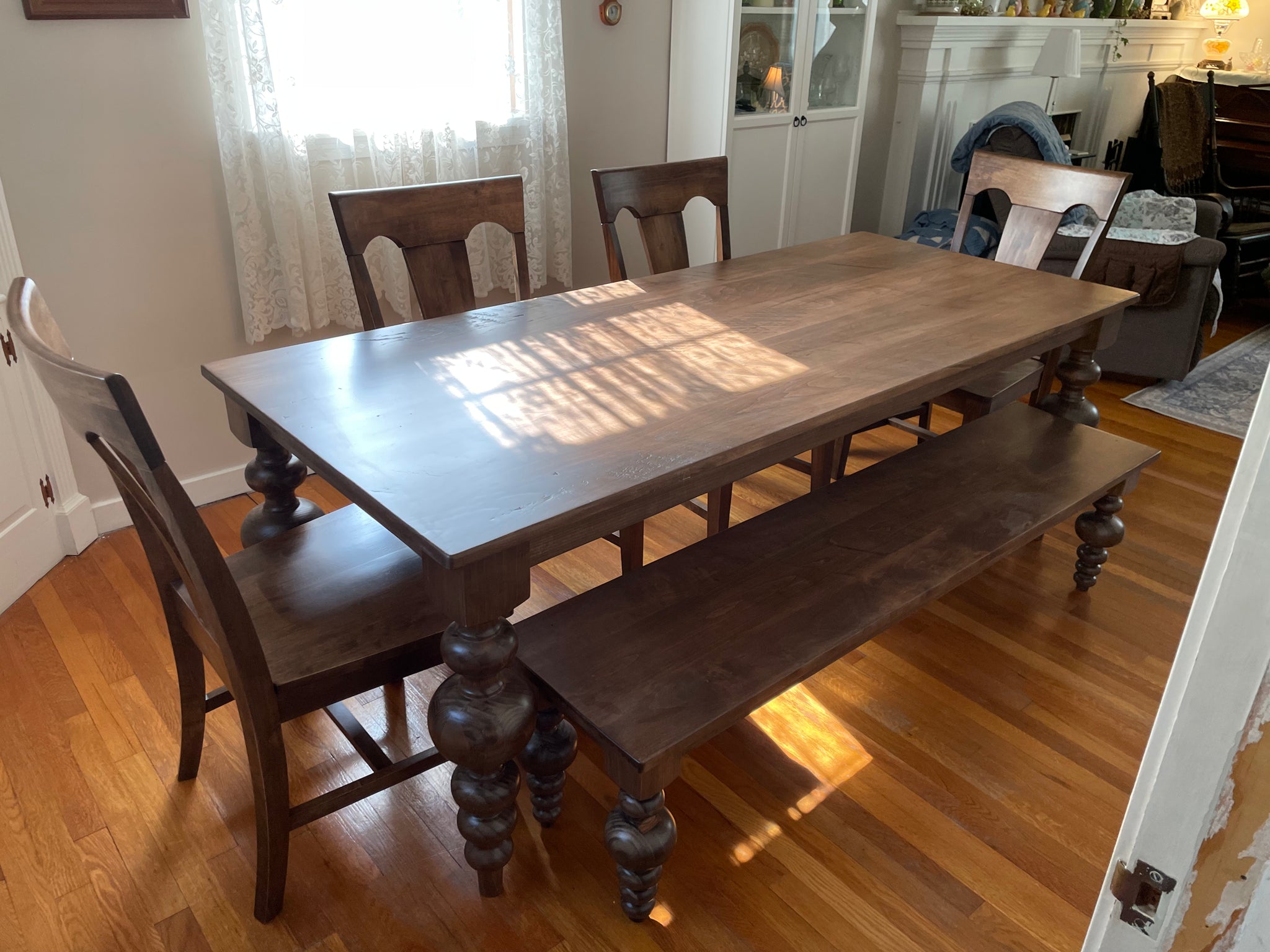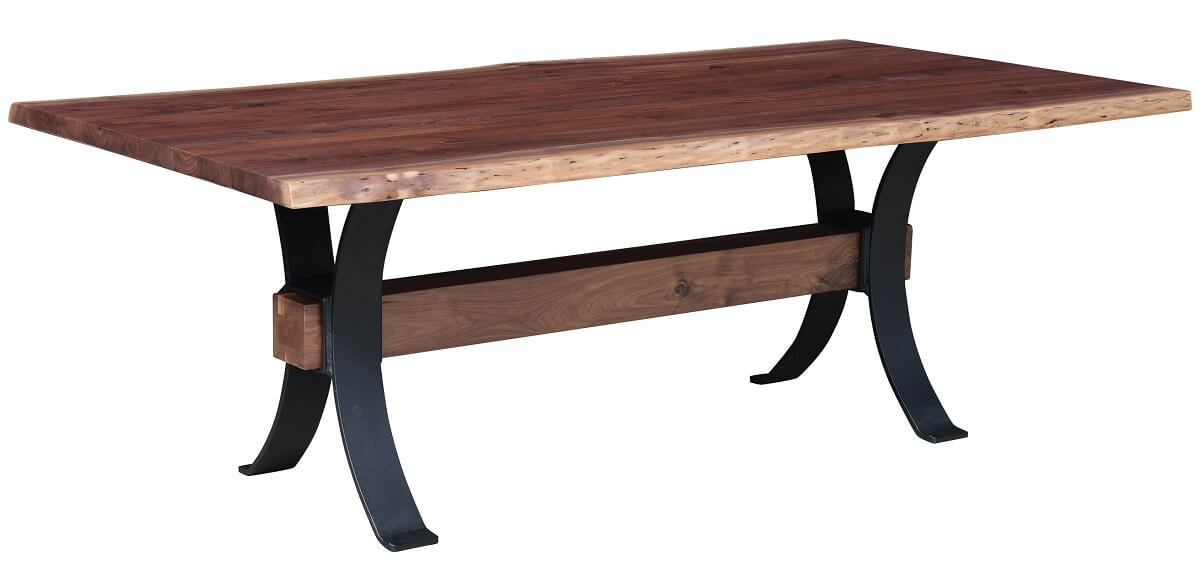Add Charm and Elegance to Your Space with Distinct Dining Room Table Legs
Add Charm and Elegance to Your Space with Distinct Dining Room Table Legs
Blog Article
From Standard to Modern: Discover the Perfect Dining-room Table Legs for Your Style
The selection of dining-room table legs plays a crucial role in defining the total character of your room, connecting the space in between traditional craftsmanship and contemporary looks. While traditional styles such as cabriole and turned legs stimulate a feeling of ageless refinement, contemporary styles like barrette and geometric alternatives offer a chance for striking visual interest. Examining the right equilibrium in between these designs requires a nuanced understanding of your existing decor and individual taste. As you consider these aspects, the concern remains: exactly how can you effortlessly integrate these varied leg designs to create a harmonious eating experience?
Understanding Table Leg Styles
The selection of dining space table leg styles can significantly influence both the aesthetic appeals and capability of the area. Each leg style contributes special functional attributes and aesthetic components, satisfying diverse style preferences and use demands. Recognizing these designs is crucial for picking the right table that straightens with your general interior design vision.
As an example, conical legs offer a clean, classic look that can enhance a space's style, while stand bases supply stability and make the most of legroom, making them perfect for smaller sized rooms. Hairpin legs, a hallmark of mid-century contemporary layout, present a commercial panache, enabling a ventilated, open feel. Trestle legs stimulate rustic charm, giving durable assistance and a feeling of timelessness.
Wood legs can bring warmth and structure, whereas metal choices often convey a streamlined, modern ambiance. Eventually, recognizing table leg styles is vital for developing a natural eating location that shows individual design while ensuring usefulness and convenience.
Typical Table Leg Options
When choosing dining-room table legs, conventional choices usually embody ageless style and workmanship. These designs mirror an abundant heritage and a dedication to quality, making them optimal for those who value timeless aesthetics.
Among the most iconic traditional leg styles is the cabriole leg, identified by its graceful rounded form. This style frequently features ornamental carvings and is most commonly located in Queen Anne and Chippendale furnishings. An additional preferred option is the transformed leg, which boasts a series of smooth, rounded shapes that supply a classic look while maintaining stability.
Moreover, the straight leg, while easy, supplies a sturdy and basic framework that can blend effortlessly with a selection of tabletop designs. For those attracted to ornate detailing, claw-and-ball feet legs stimulate a sense of magnificence and can function as a stunning prime focus in any dining space.
Last but not least, stand bases, although not purely legs, give an alternative typical choice that permits for adequate legroom and can be perfectly sculpted. Each of these standard leg styles adds to the total setting of a dining-room, weding function with visual allure.

Modern Table Leg Layouts
Modern table leg layouts provide a varied variety of designs that highlight cutting-edge materials and clean lines. These designs frequently prioritize performance while offering as striking prime focus within an eating space. Minimalist aesthetic appeals prevail, with legs crafted from materials such as steel, glass, and engineered wood, which add to a modern and ventilated feeling.
One popular design is the hairpin leg, defined by its slender, tapered structure that gives stability without overwhelming the tabletop (dining room table legs). This style is commonly discovered in mid-century modern-day furniture and can easily complement different table shapes. Another trend is using geometric websites forms, where legs might tackle unbalanced or angular types, adding visual interest and a touch of artistry

Blending Styles for Distinct Spaces
Usually, homeowners seek to produce unique dining areas that reflect their personal style by blending various style aspects. This approach enables the incorporation of diverse aesthetics, causing a harmonious yet distinctive atmosphere. For instance, pairing a rustic wooden table with smooth, modern-day steel legs can create an attractive comparison that elevates the space's overall allure.
Additionally, incorporating vintage table legs with contemporary tabletops can evoke a sense of history while preserving a modern perceptiveness. Such mixes not just display individual preference but likewise motivate creative thinking, allowing homeowners to curate an area that really feels both personal and inviting.
Color plays a vital function in this mixing procedure; choosing table legs that match or contrast with the existing color scheme can boost visual passion. Whitewashed legs can soften the boldness of a dark table surface area, creating a well balanced visual.
Tips for Choosing the Right Legs
Selecting the right table legs is vital for attaining both performance and aesthetic charm in your eating space. Begin by taking into consideration the general design of your space. Conventional setups take advantage of legs that feature detailed makings or transformed designs, while contemporary rooms may require sleek, minimal designs.
Following, assess the elevation and security of the legs. dining room table legs. Basic eating tables vary in between 28 to 30 inches in elevation, so make certain the legs enhance this dimension for comfort. In addition, robust products, such as wood or metal, can enhance security and longevity
Evaluate the leg shape as my blog well-- choices include right, tapered, or pedestal styles. Straight legs supply a traditional look, while conical legs can include a touch of style. Pedestal bases offer enough legroom and are suitable for smaller spaces.
Conclusion
In summary, choosing the perfect dining-room table legs needs careful consideration of both standard and modern-day styles. Traditional choices such as cabriole and turned legs supply ageless style, while modern-day layouts like barrette and geometric forms provide a modern touch. By balancing leg style, elevation, and material with the total design, a cohesive and welcoming ambience can be achieved. Ultimately, the picked table legs need to reflect the wanted visual, boosting the eating experience within the area.
The selection of eating area table leg styles can substantially affect both the aesthetic appeals and functionality of the room. Ultimately, comprehending table leg designs is essential for producing a natural eating location that reflects personal design while guaranteeing usefulness and comfort.One of the most renowned standard leg designs is the cabriole leg, identified by its stylish curved shape. Straight legs offer a traditional appearance, while tapered legs can include a touch of sophistication.In summary, picking the optimal dining space table legs calls for careful consideration of both conventional and contemporary designs.
Report this page